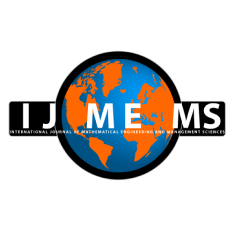Anik Anekawati
Information System Study Program, Universitas Wiraraja, 69451, Sumenep, Indonesia.
. Purhadi
Department of Statistics, Institut Teknologi Sepuluh Nopember, 60111, Surabaya, Indonesia.
Mohammad Rofik
Faculty of Economics and Business, Universitas Wiraraja, 69451, Sumenep, Indonesia.
DOI https://doi.org/10.33889/IJMEMS.2025.10.5.061
Abstract
Research involving causal relationships among latent variables that generally use structural equation modeling (SEM) analysis and spatial data simultaneously has an unavoidable impact on using spatial SEM analysis. A region-based spatial SEM model was developed for cases that include spill-over effects across regions. Spatial weights in the inner model offered flexibility and were more informative than conventional techniques. Therefore, this research developed a model that involved multivariate data, latent variables, and spatial data, specifically spatial autoregressive, in the form of a multivariate spatial autoregressive model that involves latent variables (MSAR-VLs). This development integrated latent variable estimation, error distribution of the model, parameter estimation, spatial dependency testing, and partial parameter hypothesis testing, which used the weighted least squares (WLS), the properties of expected and variance value, maximum likelihood estimation (MLE) method, Lagrange multiplier (LM), and Wald test methods, respectively. The results of the MSAR-LVs model development were applied to the economic growth modeling for regencies in East Java, Indonesia. The research findings on developing the MSAR-LVs model are as follows: the error vector distribution in the MSAR-LVs model conformed to a normal distribution. Its mean value was the estimated vector of the exogenous variables. Meanwhile, the standard deviation was represented by a matrix derived from the Kronecker product between the inverse of a diagonal matrix containing the parameters of the outer model for the exogenous variables and the identity matrix. The parameter estimators did not have a closed-form solution; therefore, they were estimated using a numerical approximation approach based on the concentrated log-likelihood function. The estimator matrix that yielded the maximum log-likelihood value was selected. Under the null hypothesis, the LM and Wald test statistics conformed to a chi-square distribution with one degree of freedom. The other findings indicated that the economic growth model had a significant and negative spatial autoregressive coefficient, while the coefficient for the socio-demographic model was not significant. Additionally, human capital exerted a significant effect on economic growth, illustrating that each regency experienced a negative spill-over effect on economic growth from neighboring regencies, influenced by the present human capital in those regions.
Keywords- Multivariate spatial autoregressive, Latent variables, Structural equation modeling, Spatial SEM, Economic growth modeling.
Citation
Anekawati, A., Purhadi, .., & Rofik, M. (2025). Multivariate Spatial Autoregressive Model with Latent Variables: Application to Economic Growth Modeling. International Journal of Mathematical, Engineering and Management Sciences, 10(5), 1266-1300. https://doi.org/10.33889/IJMEMS.2025.10.5.061.



